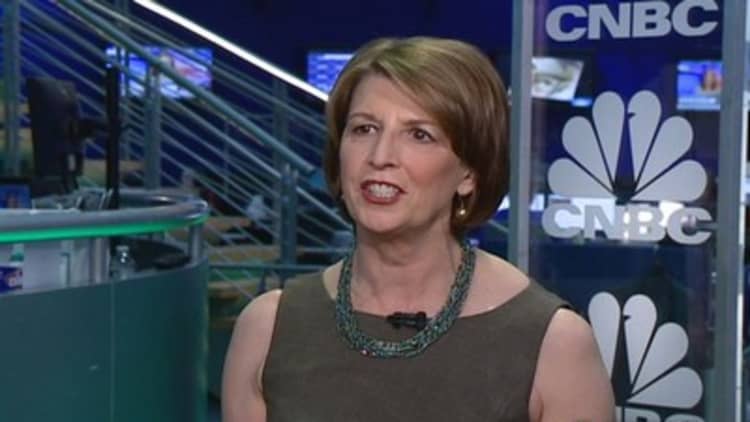Two kinds of mail are delivered reliably in late spring: income-tax refund checks and college acceptance letters. Unfortunately, what isn't so reliable is the cost of that four-year education—with college costs continuing to soar year over year, nearly 70 percent of college students carry debt upon graduation. If your child or grandchild will be heading off to campus someday, perhaps you should consider using that tax refund to start a 529 college savings plan.
The tax benefits and the growing advantages in plan design and automation make them increasingly appealing options. But fewer Americans than you might expect know about the plans—only about 29 percent of American families who save for college use 529 plans now, according to Sallie Mae. Overall, 36 percent of American families are using a dedicated college savings account.
A recent survey by T. Rowe Price found that 44 percent of parents identified a savings account as one of the best ways to save for college, but only 34 percent identified a 529 account. And 7 percent of parents chose account types that don't even exist (UBO-67 and CS213) as the best ways to save for college.
According to Sallie Mae's annual report, How America Saves for College, the average amount saved per year by families was $453, and the average total balance was $2,331. But in just a decade, tuition, room and board at a four-year school may be as much as $400,000 for private school and $200,000 for a public institution.
The numbers are daunting, but putting even small amounts in 529 plans when your children are young can make a big difference.
David Bakke, 47, who works as a contributor to the MoneyCrashers blog and makes about $40,000–$50,000 a year with his writing, contributes $100 a month to a 529 plan for his 7-year-old son. Bakke, who lives in Atlanta, gets an income-tax deduction from the state of Georgia, but that's not why he set up the plan when Nicholas was 2.
"It's something that's important to me," he said. "I knew I didn't want my son to have student-loan debt."
When Bakke first set up his plan, however, he made one common—though easy to rectify—mistake: He planned on annual contributions. Each year, it was a scramble to come up with $1,000.
As in most kinds of investing, dollar cost averaging with small but regular contributions is a better bet. Not only are you more likely to make the contributions, but you run less risk of buying at a high point. Now he has set up automatic deductions that send the money straight from his bank account at Wells Fargo to the Georgia 529 Plan.
That's not the only common mistake people make even when they are doing their best to save for a child's college education. Financial advisors highlighted five other common 529 plan pitfalls.
Percent of Families Saving for College through Vehicle and Average Amounts Saved*
Source: Source: Sallie Mae/Ipsos
1. Missing out on the basic benefits of taxes and time
The biggest advantage to a 529 plan, just like a 401(k) or IRA, is that your gains accumulate tax-free. That means the earlier you start a plan, the better, said Barry Glassman, president of MacLean, Va.-based Glassman Wealth Services. He advises his clients to aim to have $200,000 by age 18. Assuming a 7 percent return, that means, for example, that parents should save $461 a month for 18 years or $657 a month for 10 years (and then stop). The reason 529 plans are a great deal is that unlike a retirement plan, you NEVER pay tax on the gains, as long as the student uses them for approved expenses.
Read MoreWhich students have the highest debt?
2. Thinking your home state has to be your plan state
It's even more complicated to understand the state regulations of the plans, which are probably far more flexible than you realize. "Some investors think they have to invest in their state plan," said Maria Bruno, senior investment analyst, Vanguard Group. "I can invest in any state plan." Some states offer a tax break on state income taxes if you use your home state plan. Five states even offer tax parity—if you live in Pennsylvania, Arizona, Maine, Kansas or Missouri, you'll get a state income-tax break, no matter which of the states' 529 plans you use, said Drew Nordlicht, partner and managing director at HighTower San Diego. It's easy to research different states using this map from Morningstar's 529 Plan Center.

3. Making the investments too complicated
They don't have to be. You can put your money into an age-based plan, which, like a target-date fund, will automatically adjust the investments. Age-based portfolios typically are designed to shift to all cash as high school graduation day approaches. Fully half of the $50 billion Vanguard holds in 529 plans is in age-based plans, and that's where most of the growth is coming, Bruno said. If you want to be a more active investor in your 529 plan, keep in mind that you are allowed by federal law only to buy and sell within the plan once a year.
Read MoreCollege costs are soaring—but not all aid is
4. Not understanding just how much fees can cost you
Some state plans are sold by brokers and can have upfront commissions of 4 percent to 5 percent, Glassman said. If you want to use a broker-sold plan in your state, perhaps for the income-tax deduction, you should investigate whether a company with which you're affiliated, or an LLC you can form, can establish a plan without paying the commission, Glassman advised.
Investments within the plan can have damaging fees, too: Nordlicht analyzed two portfolios for CNBC, using an initial investment of $14,000 (the maximum allowed per person per child under federal law) and then not a penny more for 18 years. With an annual return assumption of 7 percent, an age-based index fund plan with inexpensive underlying mutual funds had a balance of $45,636.53 at age 18; an age-based actively managed fund had a balance of $37,014.88. That's more than $8,000 worth of books!
These numbers also make another good point: If you think that a one-time investment into a 529 plan at birth, even to the max contribution, is going to come close to the hundreds of thousands of dollars needed for college if you don't keep adding year after year, think again. This hypothetical exercise was good for roughly one year at a private university at today's prices.
5. Overestimating on student expenses
Clients often overestimate how much students will need for college bills. "Maybe some expenses don't materialize," Nordlicht said. "Or your child decides to live off campus—the IRS can question the excess."
The cleanest distribution: Wait until you have the bills in hand, then make a check out in the student's name—and make sure the student in question pays the bills.
And remember, assets in a 529 plan can be changed to a different beneficiary and the money isn't considered the child's money for federal financial aid purposes.




